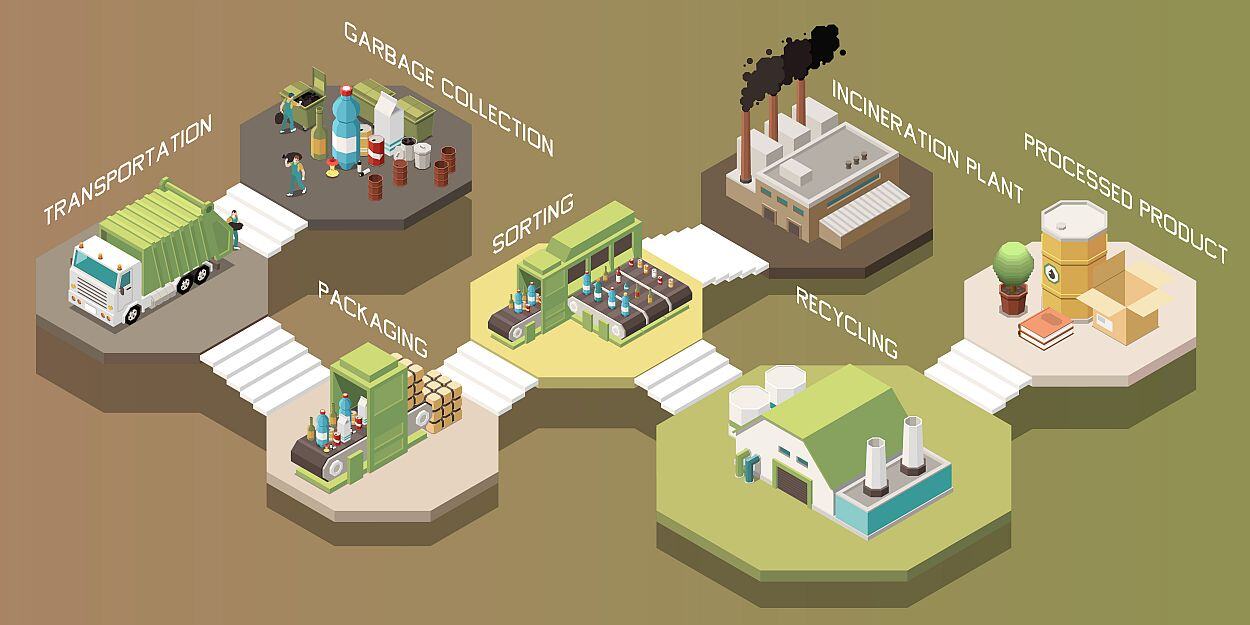
The Role of CMMS in Sustainability
Ciprian Chiripuci

How Technology is Driving Efficient Operations
Companies across industries are under increasing pressure to reduce their carbon footprint, minimize waste and optimize resource usage. However, achieving sustainability goals while maintaining operational efficiency can be challenging.
This is where CMMS (Computerized Maintenance Management Systems) step in as a game-changer. These software solutions help businesses optimize maintenance operations, reduce energy waste, extend equipment lifespan and ensure regulatory compliance—all while supporting sustainability efforts.
In this article, we’ll explore how CMMS contributes to sustainability, its benefits and best practices for leveraging it effectively.
What is CMMS and How Does It Support Sustainability?
A Computerized Maintenance Management System (CMMS) is a software tool that helps organizations manage their maintenance operations more efficiently. It provides real-time data, automates maintenance scheduling, tracks asset performance and improves resource allocation.
When integrated with sustainability initiatives, CMMS helps businesses:
✔ Reduce energy consumption
✔ Minimize waste
✔ Extend equipment lifespan
✔ Ensure compliance with environmental regulations
✔ Optimize resource utilization
Essentially, CMMS enables organizations to move from reactive to proactive maintenance, leading to cost savings, lower emissions and improved operational efficiency.
How CMMS Contributes to Sustainability
-
Reducing Energy Consumption
One of the biggest environmental challenges businesses face is excessive energy consumption. Poorly maintained equipment consumes more power, leading to higher utility bills and increased carbon emissions.
🔹 How CMMS Helps:
- Schedules regular preventive maintenance to keep equipment running efficiently
- Tracks energy usage to identify inefficiencies
- Sends real-time alerts if machines are consuming more energy than expected
👉 Example: A manufacturing company noticed that one of its industrial air compressors was consuming excessive power. By using CMMS data, they found that a clogged air filter was the culprit. After fixing the issue, the machine’s energy use dropped by 17.3%, leading to both cost savings and a reduced carbon footprint.
-
Minimizing Equipment Waste & Extending Asset Lifespan
When assets break down prematurely, they often need to be replaced, leading to unnecessary waste and resource depletion. CMMS ensures that businesses get the maximum life out of their equipment.
🔹 How CMMS Helps:
- Enables predictive and preventive maintenance
- Tracks asset health and performance trends
- Helps determine the best time to repair vs. replace equipment
👉 Example: A large hospital used CMMS to track HVAC system performance. The system flagged irregularities, prompting an early repair that extended the unit’s life by 5 years, reducing waste and saving thousands of dollars in replacement costs.
-
Optimizing Inventory and Reducing Waste
Many businesses struggle with overstocking or understocking maintenance supplies. Overstocking leads to waste and excess spending, while understocking can result in unplanned downtime and emergency purchases.
🔹 How CMMS Helps:
- Tracks inventory levels to avoid unnecessary stockpiling
- Sends alerts when critical spare parts are low
- Reduces waste by optimizing procurement schedules
👉 Example: A logistics company found that their warehouse team frequently overordered spare parts for forklifts. By using CMMS to track usage trends, they reduced their spare parts inventory by 32.8%, cutting costs and minimizing waste.
-
Ensuring Compliance with Environmental Regulations
Regulatory compliance is a key aspect of sustainability. Many industries must follow strict environmental regulations to reduce emissions, handle hazardous materials properly and maintain workplace safety.
🔹 How CMMS Helps:
- Automates compliance tracking and reporting
- Stores maintenance records for audits
- Schedules regular equipment inspections to meet environmental standards
👉 Example: A food processing plant used CMMS to track refrigeration system maintenance, ensuring it met EPA regulations for refrigerant leakage. This prevented compliance violations and reduced harmful emissions.
-
Improving Water and Resource Efficiency
Water conservation is a growing concern for many industries. Leaky pipes, inefficient cooling systems and poorly maintained water treatment plants can lead to unnecessary water waste.
🔹 How CMMS Helps:
- Detects water leaks early
- Tracks water usage trends
- Ensures that water treatment equipment is properly maintained
👉 Example: A hotel chain used CMMS to monitor water usage across multiple locations. It detected leaks in several properties, leading to a 13.7% reduction in water consumption, saving thousands of gallons per year.
-
Enabling Smart Scheduling to Reduce Carbon Emissions
Transportation-related emissions from maintenance teams driving between sites add to a company’s carbon footprint.
🔹 How CMMS Helps:
- Optimizes route planning for maintenance teams
- Groups maintenance tasks to reduce unnecessary travel
- Uses IoT sensors to schedule service only when needed
👉 Example: A city’s public works department implemented CMMS to optimize technician dispatching for repairs. By grouping maintenance tasks geographically, they reduced fuel consumption by 22.6%, cutting emissions significantly.
Image by macrovector on Freepik.
Related posts
Here are some resources to help you get more out of your assets


Ciprian Chiripuci
Truck Sealing in Delivery Logistics: Definition, Benefits and Best Practices

Ciprian Chiripuci
Mastering that Last Mile
READY TO TALK?